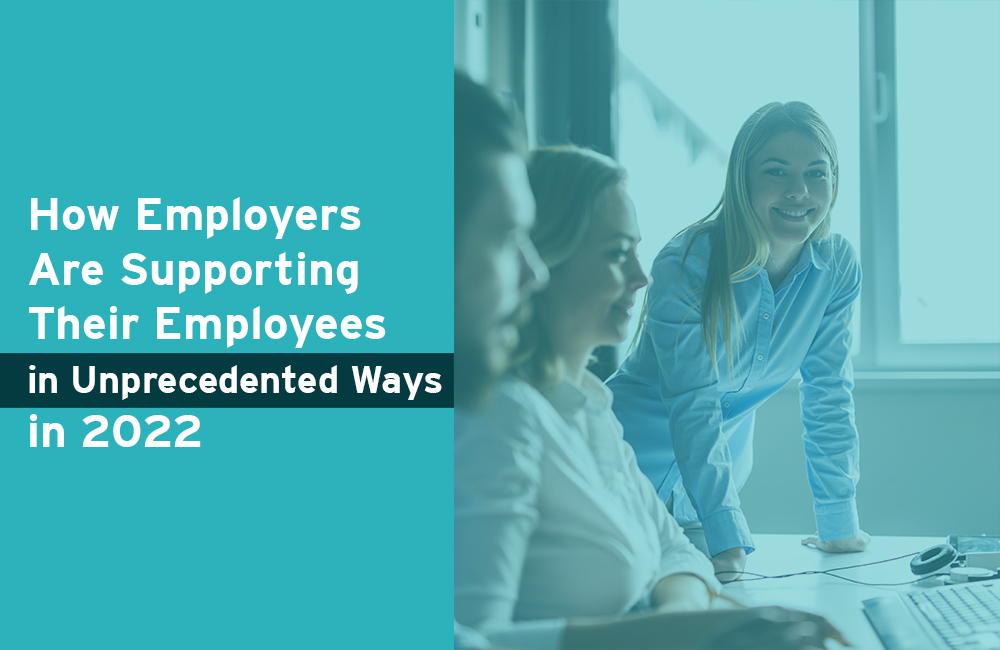
How Employers Are Supporting Their Employees in Unprecedented Ways in 2022
Although the pandemic’s future is uncertain, employers are looking at new trends in employee benefits to get the most out of their health plans and support their employees like never before. Here’s this year’s new trends in employee benefits and what it means for employers beyond the pandemic.
Repairing the Employer-Worker Relationship
The past few years have tested the relationship between employers and employees for a multitude of reasons, including burnout and lack of health equity, and employers have been asked to step up in unprecedented ways to support the health and wellbeing of their employees. Although many have answered that call, the worker-employer relationship has ultimately become strained.
In a Harvard Business Review study of 1,500 workers:
- 89% of workers said their work life was getting worse.
- 85% said that their overall well-being declined
- 56% said that their job demands had increased.
Four out of five job losses during the pandemic were among the leisure, hospitality, and education sectors – the lowest quarter of wage earners. This McKinsey study suggests over 100 million people will need to find a new occupation by 2030.
And while 40% of global workers will consider leaving their employer this year, 7 in 10 employers are still struggling to fill vacancies due to a lack of technically skilled candidates.
Employers that support continuing education, allow flexible work arrangements, advance DEI and health equity initiatives, implement work-life balance policies, and improve access to behavioral health resources will experience an improved relationship in the years to come.
Behavioral Telehealth Expansion
With roughly one in five employees dealing with a mental health issue – and the pandemic exacerbating this crisis – behavioral health is becoming bigger than ever. Pre-pandemic, less than 2% of outpatient behavioral health claims were for virtual visits. Today, that number is closer to 25%.
Employees using these services is a good sign, because as we’ve written, unchecked stress and long-term mental health issues lead to poor health results. And while 89% of employers recognize the $44 billion dollar benefit of improving their employees’ mental health, workers still faces access barriers.
First, there’s a need for more behavioral health providers.
Next, employers need to offer personalized telehealth options, which reduce barriers like transportation.
Still yet, the most obvious barrier to accessing mental health: the cost. To be an employer of choice and have a workforce that shows up and is healthy and engaged, many employers are beginning to offer behavioral health services at low- or no-cost – which is a great sign moving forward.
Virtual Health Care Options Galore
Whether the pandemic wanes away or is here to stay, one thing’s for certain: it has transformed remote work. This new era is bringing more investment into technological innovation, and with that comes consumer expectations for personalized, virtual solutions to their health care needs. Here are some digital health trends in employee benefits to keep an eye on:
Biometric screenings: Of employers that made changes to their biometric screenings, 20% moved to a digital platform.
Health and Wellness Programs: According to a KFF survey, 50% of smaller organizations (50-199 employees) and 68% of larger organizations (more than 200 employees) reported changing their health and wellness programs:
• 15% of smaller firms and 21% of larger firms added a new digital program or digital content to their program.
• 8% percent of smaller firms and 10% of larger firms increased support for wearable devices.
• 17% of smaller firms and 34% of larger firms expanded or modified the content of their existing programs to better address the health needs of people working from home.
Remote Support: In a Mercer survey of 1,000 employers, 21% say they will add or enhance wellbeing initiatives specifically targeted for remote workers, and a quarter say they are addressing provider access issues that remote workers face.
Digital Health Offerings: As previously mentioned, telehealth is now a standard expectation, and 72% of employers are taking it a step further by offering mental health options in a digital fashion, including:
- Mindfulness and meditation apps
- Online stress management classes
- Sleep improvement trackers
- Weight management apps
- On-demand fitness solutions
Using Data to Support Employees
At the end of the day, changes to your employee health benefits should always be driven by your data – not just what’s trending. If you’re considering changes to your health plan, be sure to align all your vendors to review your goals this year, so everyone’s on the same page. Need help getting your vendors together or obtaining and interpreting your data? Click here to contact me and I’ll help work with you and your broker to get started.








